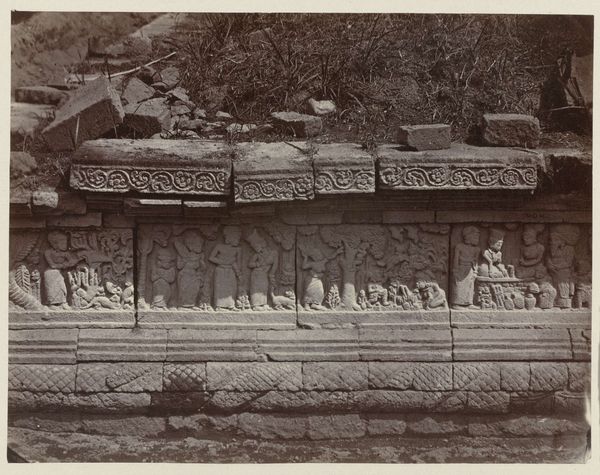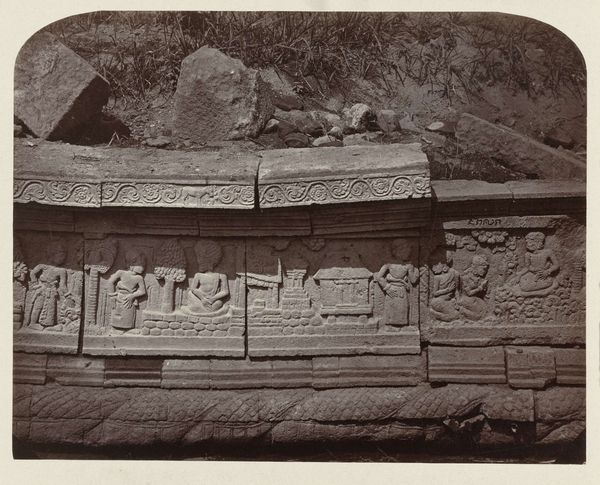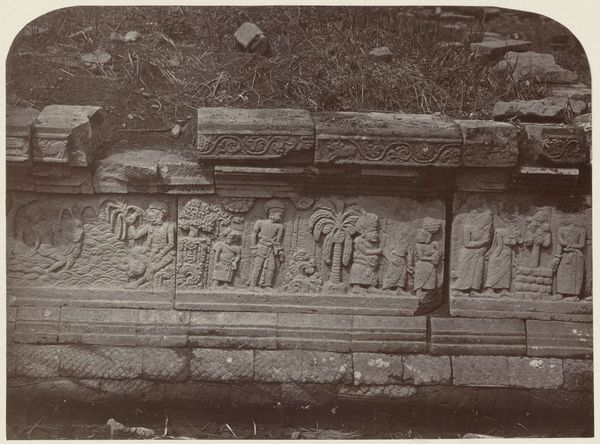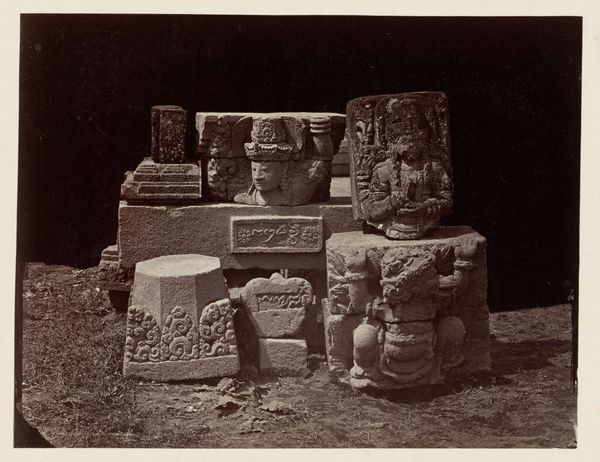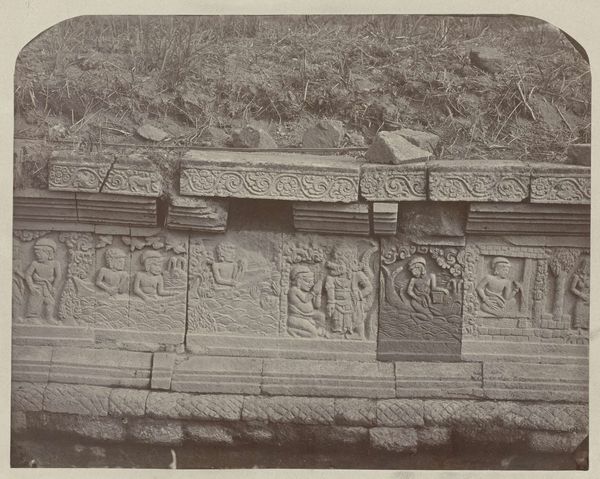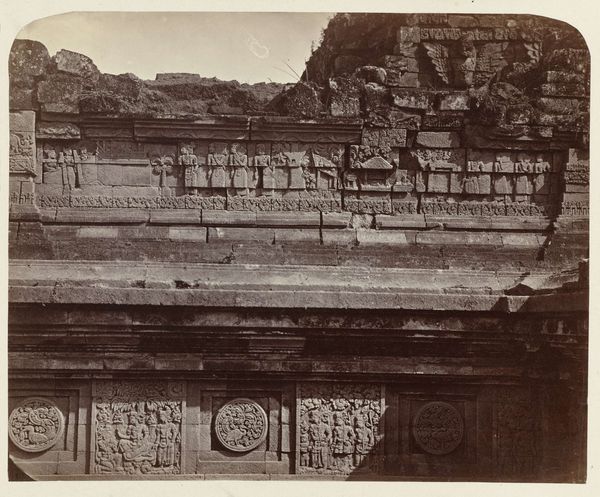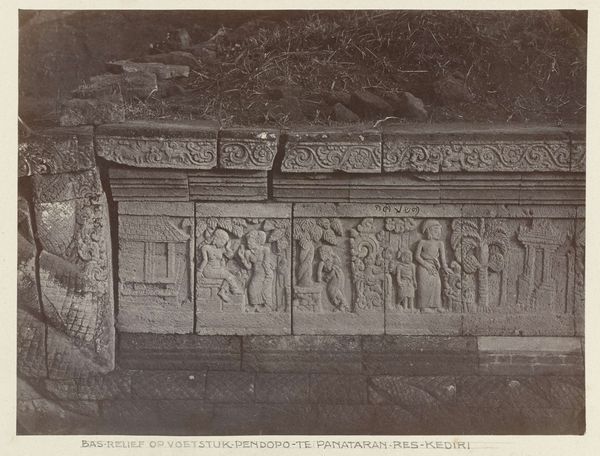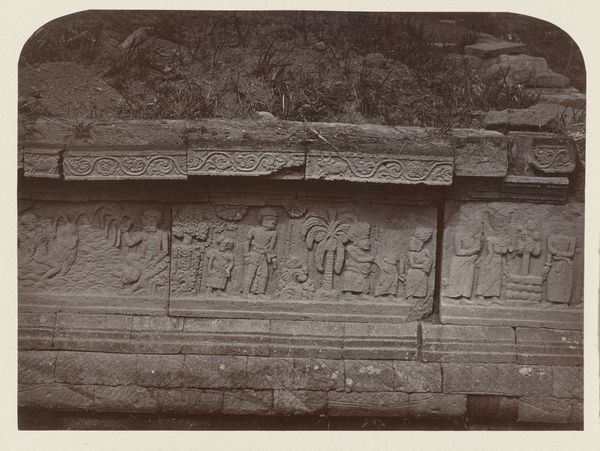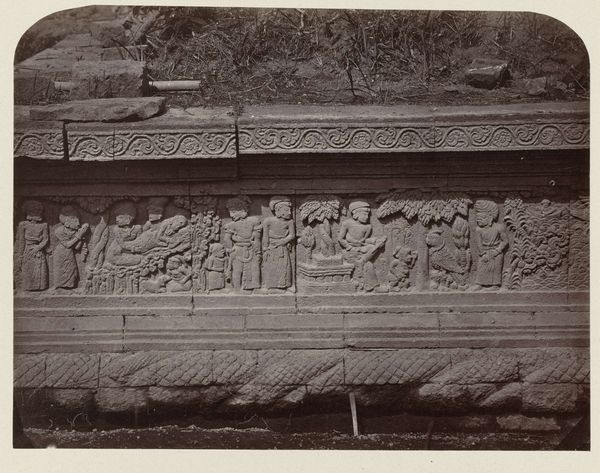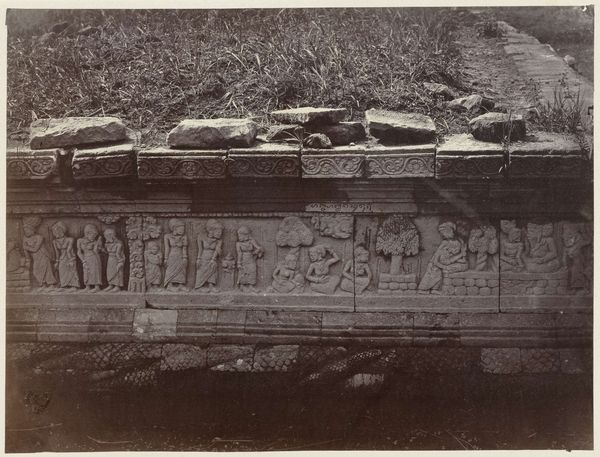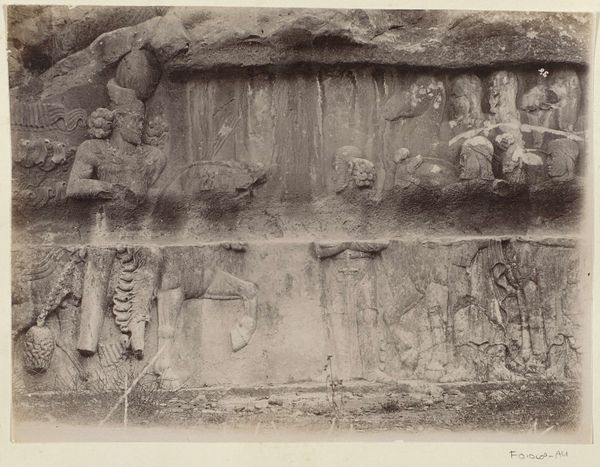
Basreliëf op het pendopo voetstuk aan de westzijde van Candi Panataran. Possibly 1867
0:00
0:00
print, relief, photography, gelatin-silver-print
# print
#
relief
#
landscape
#
indigenism
#
photography
#
ancient-mediterranean
#
gelatin-silver-print
#
19th century
Dimensions: height 210 mm, width 260 mm
Copyright: Rijks Museum: Open Domain
Editor: This photograph, taken possibly around 1867 by Isidore Kinsbergen, documents a bas-relief on the pendopo of Candi Panataran in Indonesia. The stone carving, with its landscape backdrop, gives a strong sense of cultural preservation, though in sepia tones. What catches my eye is how the composition seems to blend storytelling with architectural form. What kind of narrative do you think it conveys? Curator: The integration of narrative reliefs into architecture, particularly sacred structures like Candi Panataran, speaks to the temple's function as a repository of cultural memory. The bas-relief becomes a visual language. Consider how this photographic record transforms the tangible stone into a persistent, reproducible symbol. Editor: That’s interesting. Do you mean the photo itself now becomes part of that visual language? Curator: Precisely! The very act of photographing and re-presenting this image almost participates in an ongoing cycle of cultural transmission. Each carving depicts particular deities, or characters involved in traditional local folktales – which would’ve been immediately readable by the original audience. Do you see anything familiar or strange? Editor: Well, the figures definitely have an otherworldly feel. Some almost look animalistic. Curator: Indeed! The hybridization of human and animal forms in the carvings alludes to spiritual connections beyond the material realm. Each hybrid would represent different values, acting almost like allegories. And notice how nature interweaves—trees, mountains. It suggests an interconnected cosmos where humans, deities, and nature are inseparable. What do you make of that integration? Editor: I see how all the symbolic characters contribute to its overall storytelling effect. Now I realize the relief is not simply decorative but educational, like reading an illustrated ancient poem! Curator: And how that photo can carry those narratives into a different kind of present. We find the photo preserving something more, it makes one wonder about who got to see it, and how their understanding would resonate into the present, perhaps inspiring new artistic approaches. Editor: Exactly! I can appreciate the role of images and photography in cultural heritage now. It is much more complex than I previously understood.
Comments
No comments
Be the first to comment and join the conversation on the ultimate creative platform.
